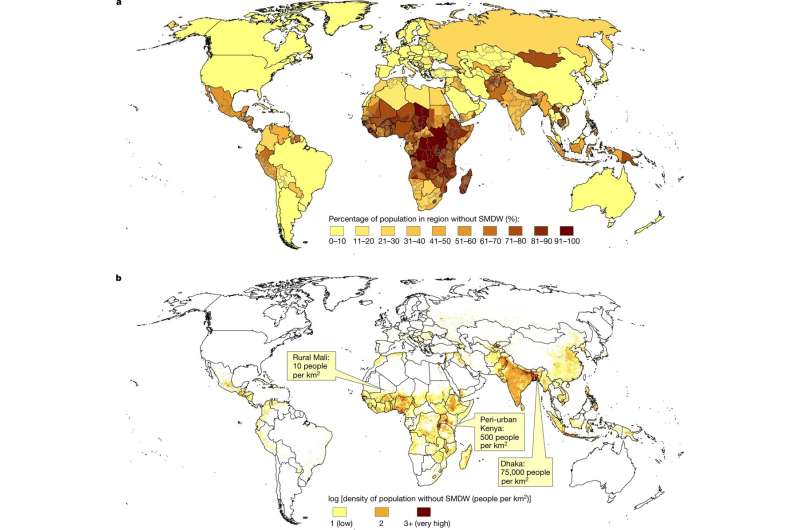October 29, 2021 report
Model suggests a billion people could get safe drinking water from hypothetical harvesting device

A team of researchers from X–Alphabet's "moonshot factory," Google and the WHO/UNICEF Joint Monitoring Programme, Division of Data, Analytics, Planning and Monitoring, UNICEF, has developed a model that shows that a hypothetical device that uses solar power to pull water from the air could potentially serve a billion people across the world. In their paper published in the journal Nature, the group describes the factors that went into their model and its possible impact on the development of devices meant to meet the global challenge of providing safe drinking water to the people of the world.
As the researchers note, approximately 2.2 billion people across the globe experience challenges in obtaining safe drinking water. This, they note, is despite efforts to build desalination plants in the most heavily impacted countries. As efforts to build more plants are undertaken, another approach might be taken to fill the need in the meantime—using small portable devices that pull water from the air using solar power. The team at Alphabet was working on such a device but found it difficult to meet its goal of producing water at just one cent per liter. Recently, they made the project open-source so that others in the field can continue to build upon the work.
In building their model, the researchers acknowledged that solar powered devices capable of pulling water from the air only work well under certain conditions—where humidity levels regularly reach 30%, where there is plenty of sunshine and where it is warm enough. To account for people living in areas with such conditions, the researchers pulled average weather data from sites across the globe and mapped them with populations facing water challenges. In doing so, they found that more than a billion people could benefit from such a device that could produce on average five liters of drinking water per day. They conclude by claiming that current technology trends suggest that the hypothetical device they envisioned in their model could soon become reality. At that point, however, it would fall to those who are able to pay for and distribute them to do so.
More information: Jackson Lord et al, Global potential for harvesting drinking water from air using solar energy, Nature (2021). DOI: 10.1038/s41586-021-03900-w
© 2021 Science X Network

















